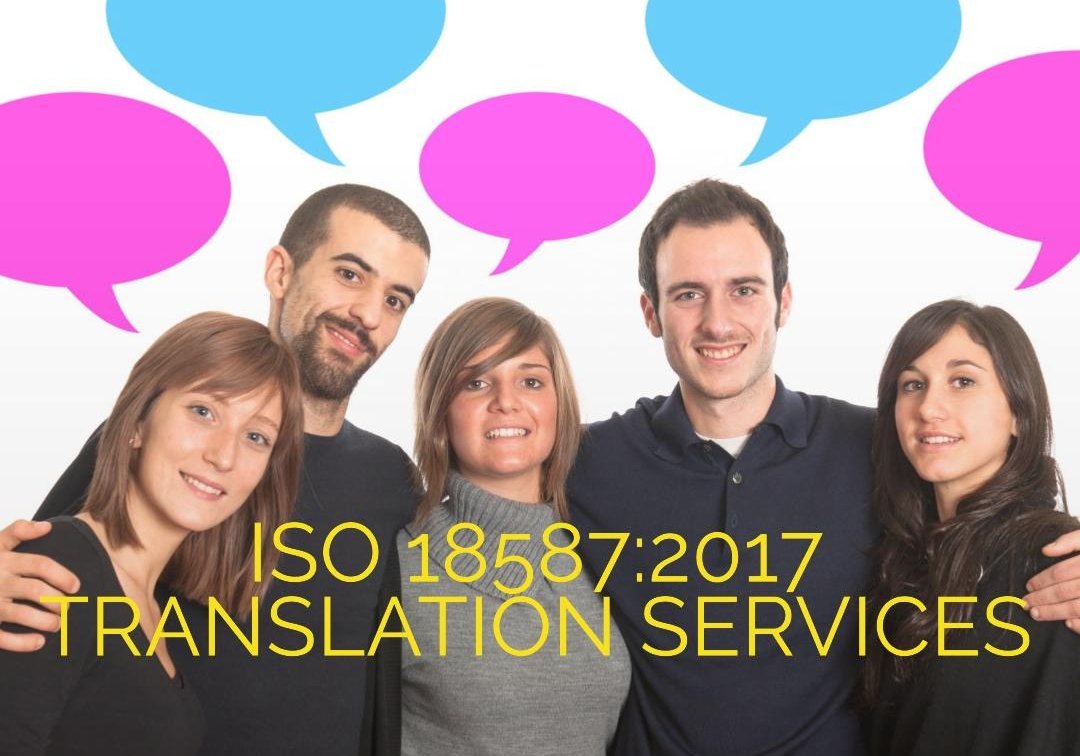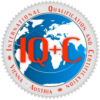ISO 18587:2017 Translation Services -Post-Editing of machine translation output -Requirements
ISO 18587:2017 is an international standard that specifies requirements for the post-editing of machine translation (MT) output. This standard aims to ensure that the quality of post-edited translations meets the necessary standards and satisfies client requirements. It provides guidelines for translation service providers (TSPs) and post-editors to ensure consistency, accuracy, and efficiency in the post-editing process.
Key Aspects of ISO 18587:2017
- Objective:
- To provide a framework that ensures the quality and reliability of post-edited machine translation (MT) output.
- Scope:
- Applicable to all organizations and individuals involved in the post-editing of MT output, including translation agencies, freelance post-editors, and in-house translation teams.
- Benefits:
- Ensures high-quality post-edited translations that meet client specifications.
- Enhances the efficiency and effectiveness of the post-editing process.
- Provides a competitive edge by demonstrating adherence to international standards.
- Facilitates continuous improvement and professional development.
Requirements and Implementation
1. Human Resources:
- Post-Editor Competence: Post-editors must have the necessary linguistic competence, subject-matter expertise, and skills in both the source and target languages. They should also be trained in post-editing techniques and best practices.
- Qualifications and Training: Post-editors should have formal education in translation or a related field, or equivalent professional experience. Continuous professional development and training in post-editing are essential.
2. Pre-Editing and Pre-Production Processes:
- Needs Analysis: Conduct a thorough analysis of the client's requirements, including the purpose, target audience, and quality expectations of the post-edited translation.
- MT Engine Selection: Choose an appropriate MT engine based on the language pair, domain, and specific needs of the project. Pre-editing the source text to improve MT output quality may be necessary.
3. Post-Editing Process:
- Full Post-Editing (FPE): Involves comprehensive editing to ensure the output is of human translation quality, with correct grammar, style, and terminology, and is free of errors.
- Light Post-Editing (LPE): Focuses on making the MT output understandable and accurate, correcting major errors but not necessarily refining the style or fluency to a high level.
- Consistency and Terminology: Ensure consistency in terminology and style throughout the text. Use terminology databases and style guides as references.
4. Quality Assurance:
- Review and Revision: Implement a review process to check the post-edited output for accuracy, consistency, and adherence to client specifications. The review should be performed by a qualified post-editor or reviewer.
- Feedback Mechanisms: Establish mechanisms for receiving and addressing client feedback to improve future post-editing projects.
5. Project Management:
- Project Planning: Develop a detailed project plan that outlines the scope, timeline, resources, and responsibilities.
- Communication: Maintain clear and consistent communication with the client throughout the project to ensure all requirements are understood and met.
- Risk Management: Identify potential risks in the post-editing process and implement strategies to mitigate them.
6. Client Relationship:
- Client Requirements: Clearly define and document client requirements at the start of the project. Ensure alignment with client expectations regarding the level of post-editing required (FPE or LPE).
- Confidentiality: Ensure the confidentiality and security of client information and documents.
7. Technical Resources:
- Post-Editing Tools: Utilize appropriate post-editing tools and technologies to enhance efficiency and accuracy, such as CAT tools, QA tools, and terminology management systems.
- Data Security: Implement robust data security measures to protect client information and post-editing data.
Certification Process
- Preparation:
- Understand the requirements of ISO 18587:2017 and assess the current processes and practices of your organization.
- Gap Analysis:
- Conduct a gap analysis to identify areas that need improvement to meet the standard’s requirements.
- Implementation:
- Develop and implement procedures and practices that align with ISO 18587:2017. Ensure all staff involved in post-editing are trained and aware of these procedures.
- Internal Audit:
- Conduct internal audits to verify the effectiveness of the implemented processes and identify any areas needing improvement.
- Management Review:
- Perform regular management reviews to assess the suitability, adequacy, and effectiveness of the post-editing processes.
- Certification Audit:
- Engage an accredited certification body to perform an external audit. The audit will be conducted in two stages:
- Stage 1: Review of documentation to ensure compliance with ISO 18587:2017.
- Stage 2: On-site audit to verify the implementation of processes and procedures.
- Engage an accredited certification body to perform an external audit. The audit will be conducted in two stages:
- Certification Decision:
- Based on the audit findings, the certification body will decide whether to grant ISO 18587:2017 certification.
- Surveillance Audits:
- Periodic surveillance audits are conducted to ensure ongoing compliance with ISO 18587:2017.
- Recertification:
- The certification is typically valid for three years, after which a recertification audit is required.
ISO 18587:2017 Translation Services -Post-Editing of machine translation output -Requirements
ISO 18587:2017 is an international standard that specifies requirements for the post-editing of machine translation (MT) output. This standard aims to ensure that the quality of post-edited translations meets the necessary standards and satisfies client requirements. It provides guidelines for translation service providers (TSPs) and post-editors to ensure consistency, accuracy, and efficiency in the post-editing process.
Key Aspects of ISO 18587:2017
- Objective:
- To provide a framework that ensures the quality and reliability of post-edited machine translation (MT) output.
- Scope:
- Applicable to all organizations and individuals involved in the post-editing of MT output, including translation agencies, freelance post-editors, and in-house translation teams.
- Benefits:
- Ensures high-quality post-edited translations that meet client specifications.
- Enhances the efficiency and effectiveness of the post-editing process.
- Provides a competitive edge by demonstrating adherence to international standards.
- Facilitates continuous improvement and professional development.
Requirements and Implementation
1. Human Resources:
- Post-Editor Competence: Post-editors must have the necessary linguistic competence, subject-matter expertise, and skills in both the source and target languages. They should also be trained in post-editing techniques and best practices.
- Qualifications and Training: Post-editors should have formal education in translation or a related field, or equivalent professional experience. Continuous professional development and training in post-editing are essential.
2. Pre-Editing and Pre-Production Processes:
- Needs Analysis: Conduct a thorough analysis of the client's requirements, including the purpose, target audience, and quality expectations of the post-edited translation.
- MT Engine Selection: Choose an appropriate MT engine based on the language pair, domain, and specific needs of the project. Pre-editing the source text to improve MT output quality may be necessary.
3. Post-Editing Process:
- Full Post-Editing (FPE): Involves comprehensive editing to ensure the output is of human translation quality, with correct grammar, style, and terminology, and is free of errors.
- Light Post-Editing (LPE): Focuses on making the MT output understandable and accurate, correcting major errors but not necessarily refining the style or fluency to a high level.
- Consistency and Terminology: Ensure consistency in terminology and style throughout the text. Use terminology databases and style guides as references.
4. Quality Assurance:
- Review and Revision: Implement a review process to check the post-edited output for accuracy, consistency, and adherence to client specifications. The review should be performed by a qualified post-editor or reviewer.
- Feedback Mechanisms: Establish mechanisms for receiving and addressing client feedback to improve future post-editing projects.
5. Project Management:
- Project Planning: Develop a detailed project plan that outlines the scope, timeline, resources, and responsibilities.
- Communication: Maintain clear and consistent communication with the client throughout the project to ensure all requirements are understood and met.
- Risk Management: Identify potential risks in the post-editing process and implement strategies to mitigate them.
6. Client Relationship:
- Client Requirements: Clearly define and document client requirements at the start of the project. Ensure alignment with client expectations regarding the level of post-editing required (FPE or LPE).
- Confidentiality: Ensure the confidentiality and security of client information and documents.
7. Technical Resources:
- Post-Editing Tools: Utilize appropriate post-editing tools and technologies to enhance efficiency and accuracy, such as CAT tools, QA tools, and terminology management systems.
- Data Security: Implement robust data security measures to protect client information and post-editing data.
Certification Process
- Preparation:
- Understand the requirements of ISO 18587:2017 and assess the current processes and practices of your organization.
- Gap Analysis:
- Conduct a gap analysis to identify areas that need improvement to meet the standard’s requirements.
- Implementation:
- Develop and implement procedures and practices that align with ISO 18587:2017. Ensure all staff involved in post-editing are trained and aware of these procedures.
- Internal Audit:
- Conduct internal audits to verify the effectiveness of the implemented processes and identify any areas needing improvement.
- Management Review:
- Perform regular management reviews to assess the suitability, adequacy, and effectiveness of the post-editing processes.
- Certification Audit:
- Engage an accredited certification body to perform an external audit. The audit will be conducted in two stages:
- Stage 1: Review of documentation to ensure compliance with ISO 18587:2017.
- Stage 2: On-site audit to verify the implementation of processes and procedures.
- Engage an accredited certification body to perform an external audit. The audit will be conducted in two stages:
- Certification Decision:
- Based on the audit findings, the certification body will decide whether to grant ISO 18587:2017 certification.
- Surveillance Audits:
- Periodic surveillance audits are conducted to ensure ongoing compliance with ISO 18587:2017.
- Recertification:
- The certification is typically valid for three years, after which a recertification audit is required.

Why i-LICS Certification?
ISO 18587:2017 provides a comprehensive framework for ensuring the quality and effectiveness of post-editing machine translation output. By adhering to this standard, TSPs and post-editors can enhance their service delivery, meet client expectations, and demonstrate their commitment to continuous improvement and high standards in translation services. This ultimately benefits clients by providing reliable, accurate, and high-quality translations that meet their specific needs and requirements.

Why i-LICS Certification?
ISO 18587:2017 provides a comprehensive framework for ensuring the quality and effectiveness of post-editing machine translation output. By adhering to this standard, TSPs and post-editors can enhance their service delivery, meet client expectations, and demonstrate their commitment to continuous improvement and high standards in translation services. This ultimately benefits clients by providing reliable, accurate, and high-quality translations that meet their specific needs and requirements.
Need help? Book a meeting at a time to suit your schedule
If you need assistance, we're here to help! You can book a call with us at a time that suits your schedule. Simply let us know your availability. Whether you have questions, need guidance, or require assistance with our services, we're committed to ensuring you receive the help you need. Contact us today to schedule your call!
Certification Milestones
-
Free strategic meeting
-
Your tailored proposal
-
Confirmation
-
Stage 1 Audit date
-
Stage 2 Audit date (Certification)
-
Obtain your Certificate
Need help? Book a meeting at a time to suit your schedule
If you need assistance, we're here to help! You can book a call with us at a time that suits your schedule. Simply let us know your availability. Whether you have questions, need guidance, or require assistance with our services, we're committed to ensuring you receive the help you need. Contact us today to schedule your call!
Certification Milestones
-
Free strategic meeting
-
Your tailored proposal
-
Confirmation
-
Stage 1 Audit date
-
Stage 2 Audit date (Certification)
-
Obtain your Certificate


